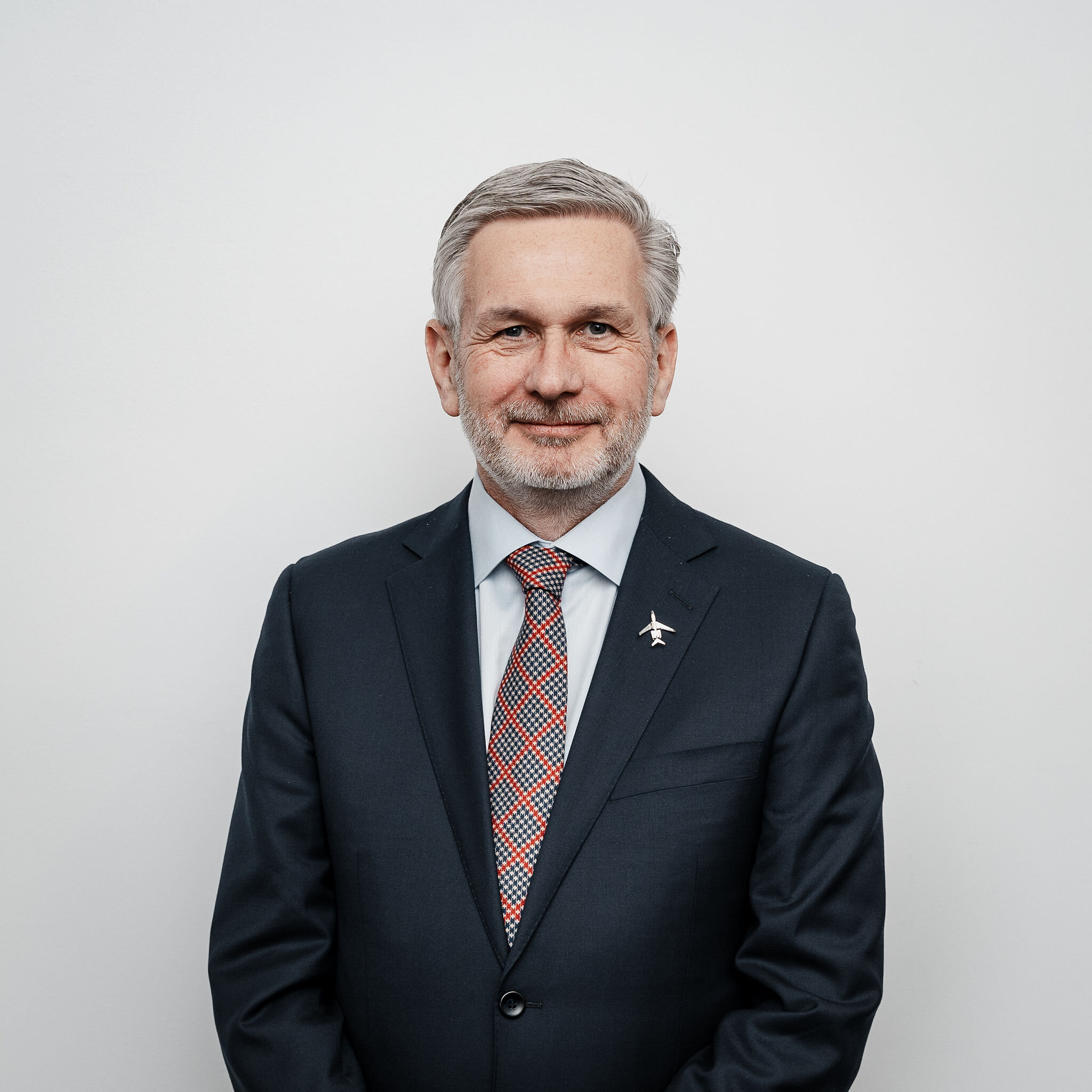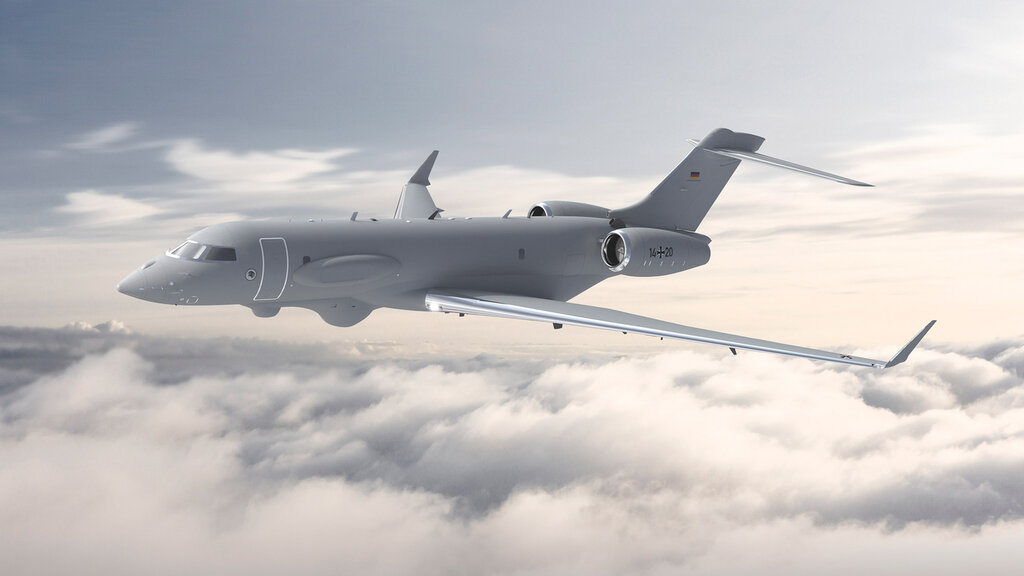Company Insight
Sponsored by Bombardier
How Bombardier Defense’s Plug-and-Play Approach is Enabling the Next-Generation of ISR
TowHaul Corporation is the leading manufacturer of off-road lowboys specifically designed for the open-pit mining industry
Main image: Rendering of the Bombardier Global 6500 for HADES, a next-generation ISR solution for the U.S. Army.

Steve Patrick, Vice President of Bombardier Defense
With defence needs constantly changing, Bombardier Defense is leading the charge in Intelligence, Surveillance and Recognition (ISR) with flexible, open system platforms. We spoke to Steve Patrick, Vice-President of Bombardier Defense, about how their business jets are supremely placed to revolutionise defence operations by offering rapid reconfigurability, reliability, and operational efficiency.

Steve Patrick, Vice President of Bombardier Defense
Bombardier Defense’s platforms have been increasingly popular for ISR missions around the world. Why would governments and operators use a modified jet for this mission-type?
These customers are looking for an efficient platform with attributes of performance, reliability, availability, and the ability to go long distances at speed. The efficiency from our business jets easily translates into a defence environment, particularly within ISR.
Legacy platforms were physically larger, heavier, and required more operators. Today, we can host the same capability in a much smaller airframe, and because of that, business jets are becoming more appropriate in the ISR world.
If you pay attention to where industry and government leaders are taking us, open system architecture is the key phrase nowadays. There’s a recognition that as the threat evolves, capability must evolve, and for capability to evolve you must be able to upgrade boxes, sensors, and workstations. You need the ability to plug and play.
If you think about USB drives, you can plug and play with almost any kind of peripheral. From a business jet perspective, we have not designed around a payload, we have designed a platform that can accept different types of payloads, so we regard ourselves as open system in that regard.
Business jet customers expect the aircraft to be ready when they’re ready to go. We measure our dispatch reliability and availability at around 99.8%. The reliability and availability of some purpose-built military platforms are significantly lower.
Meet today's tough data security compliance and exceed even the toughest government regulatory standards with kanguru.
Frank Smith, Founder and CEO of TowHaul
Bombardier often refers to being the right solution for the next-generation ISR fleets that militaries are building - why is that?
If you look at the history of the demand for ISR assets, a lot of it has been focused on Europe in the 90’s and 2000’s and the Middle East and Africa at the start of the century.
Most customers are now looking at conducting operations at a greater range from their operating bases. Some of that is the reality of operating across the Pacific, some is the changes in geopolitical relationships. When we look at the ISR needs of the future, in addition to range and endurance, the speed of response is becoming very important. Our customers may need to rapidly move their assets from one theatre to another because of an emerging crisis. Older assets would need multiple short-range hops to get from Europe to Southeast Asia, whereas business jet platforms with their inherent range and speed can make the journey in 10-12 hours.
What we’re also seeing is the recognition that requirements evolve very quickly. Customers are looking for suppliers that are nimble and responsive. We’re presenting an engineering and modification capability that is nimble, agile, and responsive to changing needs, so customers don't have to look at long procurement, acquisition, and introduction-into-service timescales.
We can do that quite easily on our business jet open system architecture. Conversely, purpose-built platforms like the legacy AWACS platforms had one mission, and changing that mission required a significant effort. We're looking to make our platforms more modular and easily reconfigurable, so that our clients don't have to start a new program every time their requirements change.
There’s also an element of cost. Acquiring the platform is one thing, but now you also need to take into consideration the cost of operating it. Some of these operators are flying thousands of hours a year, so efficiency becomes a real consideration. In a future conflict situation, fuel availability might become a restraint, so they want to be able to have enough fuel and consume it efficiently so that they can be airborne for long periods. Back at the hangar, operators don’t want to spend two or three days on maintenance. They want to land, refuel, and continue their mission. Our platforms offer cost efficiency and maintenance simplification, so that our customers can deliver mission after mission after mission.
Meet today's tough data security compliance and exceed even the toughest government regulatory standards with kanguru.
Frank Smith, Founder and CEO of TowHaul
You have multiple military programs using Challenger and Global aircraft for ISR, can you walk us through the different mission-types they are being deployed for?
There are three keystone programs that we talk about at the moment. The first one that we draw people's attention to is the battlefield airborne communication node - the BACN Program. This is something we've been doing with the US Air Force for quite a few years now. What they've created on the Global platform is a communication node that can take in all the different waveforms from different airborne, surface platforms, and satellite communications, and integrate those in a common communication gateway that allows people to communicate effectively over long distances, even if they're on different technologies. It's like having the ability with your cell phone to dial into the cockpit of an F-16. The Air Force call it Wi-Fi in the sky, but it's so much more than that. It has demonstrated the ability to connect forces across wide surface areas, but also across terrain. Most communications are line of sight, but this allows you to talk to the guy over the mountain.
We are also proud to have been selected for HADES (High Accuracy Detection and Exploitation System), which is the US Army's long-range eyes and ears for what they call multi-domain sensing. Rather than relying upon short range surveillance platforms, they can use this strategic high-altitude asset to cover a much wider operational area, using different sensors to build up an intelligence picture of the battlefield. They are going to be using the Global 6500 aircraft as their platform of choice going forward.
The third noteworthy program is PEGASUS (Persistent German Airborne Surveillance System), in collaboration with Hensoldt. Having their Kalætron Integral Signals Intelligence (SIGINT) system on our aircraft will give them a high-altitude, persistent, long range intelligence capability that is going to be cutting edge for the Luftwaffe.
Those are just three examples of how you can use our platforms in the defence world. A communication node to enable connectivity between forces, a surveillance platform to gather and disseminate data, and a signals intelligence platform to look at specific types of data for gathering and disseminating. We also have plenty of other programs, both public and non-public, across both the Global and Challenger platforms.
Operational support is a big selling point for Bombardier. Aerospace companies in Australia often need to outsource their aircraft maintenance needs because of its isolated geography - how is Bombardier Defense differentiating itself on that front?
First and most obvious is having the Melbourne service centre, which is Bombardier owned and operated, capable of supporting all our aircraft models, including defence assets. This is a strategic differentiator because the people, the tools, and the spares are there locally. These onsite, specialist technicians are trained to work on these aircraft, and they can also reach into not only our spares network, but the wider network of Bombardier expertise in Montreal and Wichita.
We have around 290 aircraft operating across APAC, with infrastructure in place via our service centre in Melbourne, servicing, and spares warehousing in Singapore, as well as ample other approved facilities approved to operate and maintain Bombardier platforms. Australia is not an outpost, it is very well served by either Bombardier directly, or the wider infrastructure of operators. It is very much a focus of ours to be where our customers are, so Australia is an important market to have physical presence in.

Rendering of the Bombardier Global 6000 for the PEGASUS Airborne SIGINT Capability by HENSOLDT.
Poor accessibility to spare parts is a common reason for aircraft being grounded. What does Bombardier do to ensure parts are available when they’re needed?
Bombardier spends a lot of time looking at in-service data and reliability metrics, what parts are in demand, as well as when and where they are consumed. We position in main warehouses sufficient stocks of all the high demand consumables. We also position at our service centers, more locally, some spare parts so that customers don't always have to go back to a warehouse. We recognize that our customers operate around the globe, 24/7, and they don't want to wait days on end to get spare parts. We've chosen places like Chicago, Frankfurt, Singapore, and Hong Kong to have our distribution hubs. The connectivity from those hubs is such that you can get spare parts to customers usually next day.
We also have health monitoring systems incorporated into all our aircraft, which allows the aircraft itself to self-diagnose problems before they occur. A fault code can be transmitted back to Bombardier, and we can proactively see that a part needs to be replaced at the next opportunity. We can start looking at where the stock is and how to get it to the customer so that when they land and advise us of an issue, we tell them we are aware, and the part will be expedited.
Whether for airborne early warning, ISR, signals intelligence, or communication nodes, Bombardier provides compelling reasons to consider common platforms for different missions. Get in touch with Bombardier Defense to discuss the Global 6500 and Challenger multi-mission, open system aircraft.
Contact information
Bombardier Defense
Arevig Afarian
Communications Advisor,
Public Relations for Bombardier
Email: Arevig.afarian@aero.bombardier.com
Web: www.defense.bombardier.com
